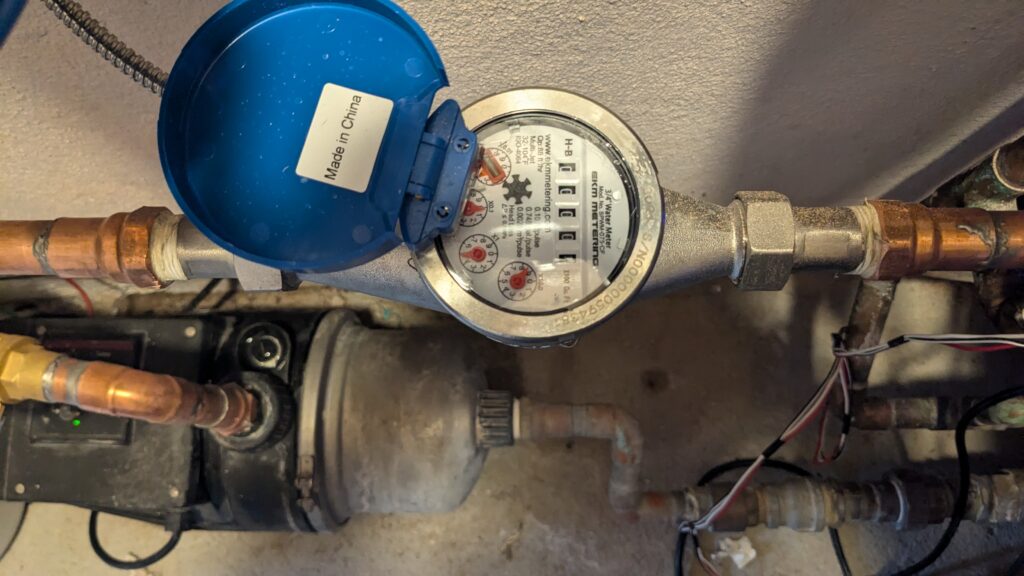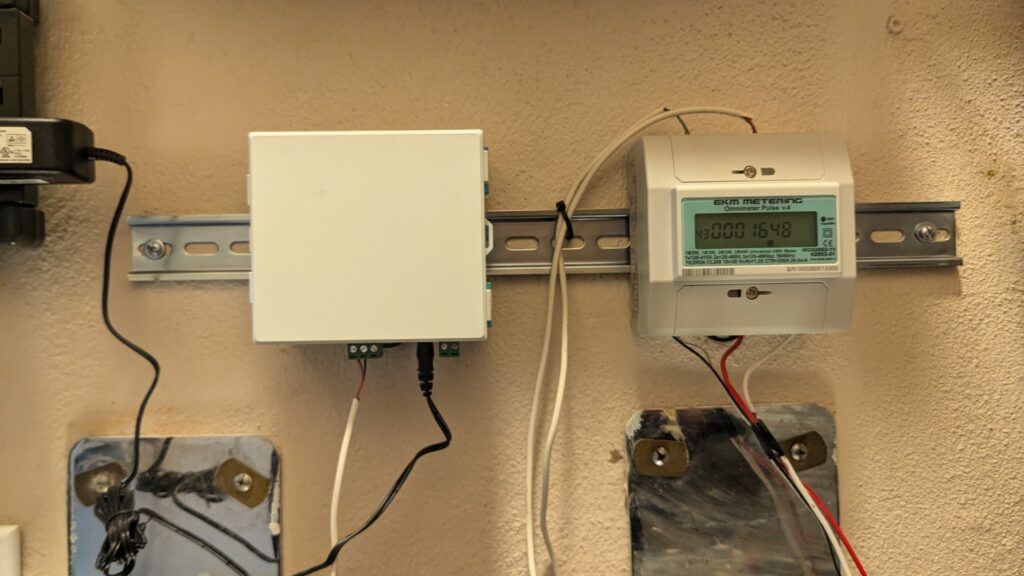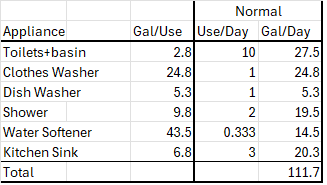Measuring the water consumption of the various fixtures/appliances can be done in several ways.
Online lookup of the dishwasher, washing machine, etc. may provide useful information, but significant usage comes from the toilets, showers, etc. which varies greatly depending on how they are adjusted, frequency of use, etc.
The SAPASMA water meter measures the total house consumption in cubic meters. (1 cu m = 264.2 US gallons). However this meter is connected directly only to the garden hose bibbs, the cistern and the tinaco. So it is useless for estimating usage by fixture.
The cistern level can be measured manually using an 8 ft long 2×2 wood dipstick. Knowing the width and length of the cistern (using a tape measure or laser distance meter) along with the depth provides the water volume in cubic inches. (1 cu in = 0.00433 US gallons). Turning off the intake valve to the cistern lets you measure the total house consumption. But this does not show the usage by fixture.
It is relatively east to measure the depth of water in the cistern accurately using the dip stick. But it is not so easy measuring the width and depth to get its surface area especially if it is located under the garage floor as mine is. I measured 104.3 x 137.8 = 14,376 sq in with a depth of 80 inches. This works out to 1,150,000 cu in or about 5,000 gallons. However, using the calibrated water meter described below, I remeasured the actual water consumption over a several week period along with the drop in level with the dipstick. A total of 468,288 cu in produced a drop in the level of 27.5 inches, so the actual area must be 17,028 sq in. With a full depth of 80 inches, the correct volume is 1,362,000 cu in or about 5,900 gallons. That is nearly 20% higher than originally measured, but the bottom of the cistern contains silt and the pump entry tube is above the bottom a few inches. So to be conservative, I am continuing to use 5,000 gallons as the cistern usable capacity.
The best method to measure usage is to install a small water meter directly into the water line between the whole house cistern pump and the water purification system. These are accurate and surprisingly inexpensive, but require a plumber to do the installation. Several brands are available on line. The one I used was made by EKM Metering and is their model SPWM-075-CF. It measures consumption in cubic feet with a resolution of .01 cu ft. (1 cu ft = 7.48 US gallons). It includes a remote readout that generates a pulse every 0.1 cu ft that can be sent using their Omnimeter and Push Control System to a remote server for data storage and readout. The water meter itself can also be read manually and only costs about $75.

The EKM water meter is shown above and the Omnimeter with Push remote readout appears below. You do not need to buy the Ominimeter and Push unless you want to record and collect data remotely.

The following table shows the water use measured by the water meter under normal conditions.

Software provided by EKM Metering allows some interesting features to be displayed (if you have the remote pulse readout). For example, the individual water cycles in the dishwasher and clothes washer can be seen. Also, the water used to refill each of the toilets can be measured and used to identify toilets that need adjustment. Probably the most interesting and useful data is shown below. This graph shows water consumption over a 18 hour period that included the night when no water should have been used. The three arrows indicate that 1 pulse (about .75 gallons) occurred every 2 hours. This indicates that a toilet flapper valve had a small leak which triggered the refill float valve in the tank.

To determine which toilet was leaking, the angle valve under each toilet was closed for the night and the tank lid removed to see the water level inside. The leaky toilet was immediately visible in the morning by the low level in its tank, and its flapper valve was replaced.
This illustrates the useful point that even a leak so small as to produce a drop of 0.75 gallons every 2 hours can add up: 0.75 gal / 2 hrs x 24 hrs/day = 9 gallons per day wasted. That is over 8% of the normal daily usage of 112 gallons.